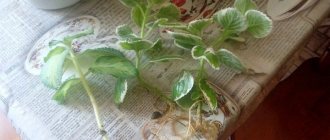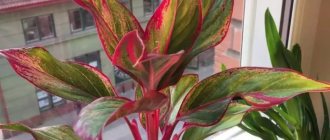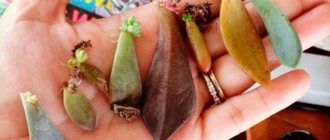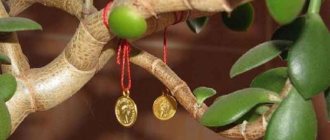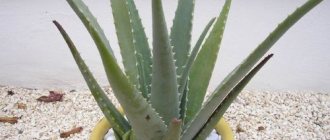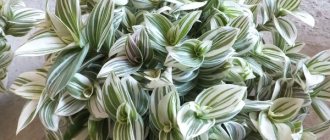Aloe is a perennial succulent from the Liliaceae family. It is native to desert and semi-desert regions of Africa, Madagascar and the Arabian Peninsula. The genus includes more than 20 species. Thanks to its fleshy and juicy leaves, aloe can retain moisture even during periods of severe drought.
A pot of aloe can be seen on many windowsills. This plant is grown not only for its decorative value, but also for its beneficial properties. As a rule, there are no difficulties in growing this succulent. It is easy to care for, but still needs a little attention.
Types and varieties of aloe for growing at home
Of the several hundred species of aloe, only a few of them are grown indoors.
Tree-like (aborescens)
The most popular type, which is also called agave. The trunk is fleshy, woody below. It bears pairs of gray-green leaves with spines along the edges. Can grow up to 1 m in height.
Faith (vera) or present
It is also called Indian aloe, Barbados aloe, Lanza. It grows in rosettes and has no trunk. The leaves are green, lanceolate, and may have white spots on the surface. There are pale pink spines along the edge. Blooms pale yellow. There are varieties with red flowers.
Jackson (jacksonii)
A bushy perennial with a short stem about 30 cm high. The leaves are narrow, up to 10 cm long. Small needles are located along the edge, and 1 longer thorn grows at the top. The surface of the leaves is covered with a waxy coating. A racemose inflorescence of tubular flowers of a reddish hue blooms on a long peduncle.
Camperi
A low-growing species with narrow, glossy, lanceolate-shaped leaves. They can reach 50 cm in length. They have small teeth along the edges. Flowers are formed on a high peduncle. Collected in racemose inflorescences of orange, red and yellow.
Short-leaved (brevifolia)
A perennial whose leaves are collected in a basal rosette. Their shape can be different, length is about 11 cm, color is bluish-green. There are white teeth on the edges and on the outside of the leaves. The flowers are tubular, red, bloom at the top of a long peduncle.
Soapy (saponaria) or spotted (maculata)
A bush with a branching stem on which leaf rosettes are formed. The shape of the leaves is flat-convex, length is about 60 cm. There are multiple white spots on both sides. The edge is strewn with spikes 0.5 cm long.
Spinous (aristata)
Bush-like succulent with short stems. The leaves are green, triangular, collected in rosettes, decorated with whitish tubercles. A long thread grows at the top of the leaf. The edges have spikes.
Tiger (variegata) or ausana (ausana)
A stemless shrub about 30 cm high. The leaves are elongated, 15 cm long, collected in a basal rosette. A pattern of white dots and stripes stands out against a dark green background.
Photo
And this is what agave and other types of aloe look like in the photo.
Agave:
Aloe vera:
Aloe intimidating:
Aloe striped:
Home care
Aloe is not a capricious plant. But in order for it to develop normally and not be subject to diseases, it needs to be provided with suitable growing conditions.
Location and lighting
For aloe, it is very important that as much sunlight falls on it as possible. It can be placed on any windows except the north direction. If there is insufficient lighting, the succulent will have to provide additional lighting. But, despite the great love for the sun, in order to avoid burns, the plant must be shaded at midday.
You need to be especially careful with aloe in the spring. At this time, it comes out of the dormant period; a sharp excess of bright sun can be harmful. The succulent needs to be accustomed to it gradually.
Priming
The soil for aloe should be loose, well permeable to air and moisture. The pH level is neutral or slightly acidic. You can buy ready-made substrate for succulents or prepare it yourself.
Need to mix:
- leaf soil (1);
- turf (2);
- coarse sand (1).
For greater looseness, you can add a little charcoal or slightly acidic peat. Before use, the soil must be baked in the oven to disinfect.
Planting and transplanting
All types of aloe require regular replanting. The first time this should be done after purchasing the plant, if it grew in transport soil. Aloe roots grow very quickly. Therefore, until the age of 5, it must be replanted annually in the spring. Mature specimens - once every 2-3 years.
Algorithm of actions:
- Prepare a pot 1/5 larger than the previous one.
- Lay a thick layer of drainage and pour some soil on it.
- Carefully remove the aloe from the pot along with the soil. Transfer it to a new pot and fill it with the remaining soil.
- Water the plant lightly, and after a few days moisten it more thoroughly.
Step-by-step video - instructions for transplanting aloe:
Temperature
Since this plant comes from the tropics, it absolutely does not tolerate cold. Therefore, to maintain life, it needs to be provided with the correct temperature conditions.
In summer, a temperature of +20..25°C is suitable for growing.
Starting from October and until the onset of spring, it must be lowered to +14..16°C. In such conditions, the plant will comfortably survive the dormant period. Warning! In no case should aloe be exposed to drafts; it is also important to avoid sudden changes in temperature.
Air humidity
Like all succulents, aloe is indifferent to air humidity. It can be high or low. But if the room is too hot, you can give the plant a shower with a spray bottle. It is important to avoid water getting inside the leaf rosette.
Feeding and fertilizers
During the growing season, aloe is fed once a month. Mineral fertilizers for succulents are suitable for it. In the fall, fertilizing is stopped and resumed only in the spring.
Watering
Aloe should be watered sparingly. Despite its tolerance to drought, you should not overdry the earthen ball. In summer, the plant is watered on average 2 times a week. In winter, 1-2 irrigations per month are sufficient. It is important not to allow water to stagnate. This can destroy the culture. The water should be warm (+18..22°C). It must be left to stand before use. To improve photosynthesis, it is recommended to regularly remove dust and dirt from the leaves. A damp cloth or non-abrasive sponge is suitable for these purposes.
Bloom
In its natural environment, aloe blooms annually, sometimes twice a year. In indoor specimens, this phenomenon is quite rare; it can occur once every 10 years.
A long peduncle grows from the rosette, at the top of which a paniculate or spike-shaped inflorescence blooms. The flowers are small, tubular, and can be red, orange, pink, and rarely white. After flowering, the arrow must be removed.
Trimming
When transplanting adult plants, it is recommended to trim the roots slightly. This promotes the growth of a powerful root system in the new soil. In order for aloe to grow upward, side shoots can be periodically removed.
Choosing a place for a plant
Aloe will quite like a place reminiscent of his native Africa. Therefore, the plant is welcomed by owners of sunny windowsills where other flowers burn. In this case, direct rays will not be harmful: use them safely, and in winter you can use additional lamps.
Room temperature is optimal for aloe. In general, aloe rarely “complains” about temperature and humidity when in an apartment, for which it has been deservedly recognized as an unpretentious indoor plant.
- In the summer, the pot can be taken out into the open air, but protected from heavy rainfall.
- In winter, it would be good to send aloe to rest: the plant’s dormant period requires a cool place (about 14 degrees). Then the bush will not stretch out in a vain search for the winter sun.
Reproduction methods
To get new plants, you can use different methods - propagation by seeds and vegetative propagation (by shoots or cuttings).
Seeds
This is one of the most time-consuming and labor-intensive methods of propagating aloe. But thanks to it you can get a lot of young succulents. The procedure is best carried out at the end of winter or early spring. Prepare a planting container and ensure good drainage. Fill with peat-sand mixture. Sow the seeds evenly. Spray the substrate with a spray bottle and cover the crops with film. Germinate aloe at a temperature of +20..22°C. Regularly ventilate the greenhouse and water the soil. When the seedlings are 1 month old, they are planted in separate pots. After 3 months, they are picked again, and then cared for like adult plants.
Side shoots
The procedure can be carried out throughout the growing season. Use a sharp knife to separate a side shoot from the base of the bush. Treat the cut areas with charcoal. Dry the shoot in a dark place for 2 days. Plant in damp sand for rooting. After the roots appear, transplant the plant into a separate pot with suitable soil. In exactly the same way, apical cuttings can be used for propagation.
Children
Over time, shoots with a developed root system form near the bush. During transplantation, they can be carefully separated and planted in individual containers.
Content temperature
How to care for aloe? If we talk about temperature conditions, it is best to install the flower on a window on the south or east side. In this case, the plant will not be able to freeze and at the same time receive the greatest amount of light. When it gets cold, be sure to place the pot on the warmest window. Care must be taken to ensure that the temperature does not drop too low. Otherwise, the aloe will stop blooming and developing. Since this plant originated in Africa, this means that it is dependent on sunlight, and therefore on heat. Nevertheless, home room temperature is quite enough for this flower.
If we talk about the minimum permissible temperature in the room, then for aloe in a pot it is +15 degrees. It is undesirable for it to go lower. If the plant begins to freeze, the foliage will become more lethargic and lifeless.
If it is a cold winter, then in this case it is recommended first of all to insulate the windows on which the flowers are located, and also to ensure that there are no drafts. You can put a sheet of polystyrene foam or other warm material on the windowsill, which will create an elevation and prevent the pot from coming into contact with the cold window sill. This will prevent hypothermia through the so-called bottom ball of soil. If the plant gets too cold, the roots may begin to rot. It is very difficult for an agave to recover from this.
Features of seasonal care
In spring and summer, aloe grows actively. It needs to be provided with good lighting, moderate watering and regular fertilizing. Since autumn, all vital processes slow down, the plant needs a period of rest. This can only be achieved under cool conditions and sufficient lighting. It is necessary to gradually reduce the temperature to +12..15°C, and reduce watering to once a month. To extend daylight hours, turn on additional lighting. In such conditions, aloe should be kept until spring.
Care errors and their elimination
Useful information for gardeners about common problems when growing aloe and how to eliminate them:
| Problem | Causes | Solution |
| Withering and fading of leaves | Excessive watering, unsuitable soil | Allow the top layer to dry between waterings, replant the plant in a substrate for succulents |
| Pulling out shoots | Poor lighting | Move the flowerpot to a brighter place; in short daylight hours, additionally use fluorescent lamps for illumination |
| Brown spots on leaves | Sunburn, lack of moisture | Ensure timely watering, shade from direct sun |
| Falling leaves | Watering with cold water | Water with soft water at room temperature |
Possible problems
If the rules of maintenance and care are violated, problems may arise:
| Problem | Possible Solution |
| Shrinking of leaves | Lack of nutrients The problem is solved by transplanting into fresh soil and subsequent fertilizing. |
| Root rotting | Develops when the soil is waterlogged. This often happens when there is no drainage in the pot. If the plant begins to wither, it should be replanted with a complete replacement of the soil. |
| The edges of the leaves turn yellow | The room has dry air and high temperatures. The cause may be a lack of potassium, watering with chlorinated water. Depending on the reason, you need to increase the humidity level, regularly ventilate the room, and add potassium fertilizer. |
| Fading and stretching of foliage | Growing in too dense, heavy soil. Transplanting into a loose substrate will help solve the problem. |
| The leaves have turned red | The lighting is too bright. Aloe needs to be moved to a shaded place. |
| The leaves are curling | Insufficient care. To avoid deformation, the leaves are periodically wiped with a damp cloth or sprayed. Curling may indicate insufficient watering, high air temperatures in winter, or rotting of the root system. |
| The leaves have become soft | Inexperienced gardeners mistake this phenomenon for a lack of moisture and begin to actively water the plant. This will worsen the situation: from excess moisture, the roots will rot. The softness of the leaves indicates that moisture quickly evaporates from the surface of the leaves, and the roots do not have time to replenish it. To restore their elasticity, aloe is moved to a shaded place with diffused lighting. |
Diseases and pests, control methods
Even with its unpretentiousness, aloe can be affected by diseases and pests. More often, problems are associated with excess moisture in the soil. Because of this, root or dry rot appears. The leaves darken and become soft. If fungal infections of aloe are detected, it is necessary to dig up and inspect the roots. Remove all affected areas and replant the plant in fresh substrate.
Aloe pests:
- mealybug;
- scale insect;
- spider mite;
- thrips.
For minor lesions, you can treat the leaves with a soap solution or alcohol tincture of garlic. In serious cases, it is better to resort to systemic insecticides (Aktara, Karbofos).
Aloe in the house: beneficial properties
Many people know the healing qualities of aloe. It is used for both medicinal and cosmetic purposes. For example, a mixture of agave juice and honey helps with coughs. To combat acne, crushed leaves of the plant are mixed with egg white and lemon juice. Taking aloe juice 15 minutes before meals in the morning and evening can help you fight excess weight. The juice also has moisturizing and regenerating properties. Therefore, it is often used in the composition of various cosmetic products.
When taking the plant internally, its contraindications must also be taken into account:
- liver and gallbladder diseases;
- haemorrhoids;
- pregnancy;
- children under 12 years old.
Aloe is a common succulent crop that is very popular for home growing. Caring for it will not be difficult even for a novice gardener. By paying very little attention to the plant, you can fully enjoy its decorative properties.
Video about varieties of aloe, planting rules, secrets of care and methods of propagation of the wonderful indoor aloe plant:
